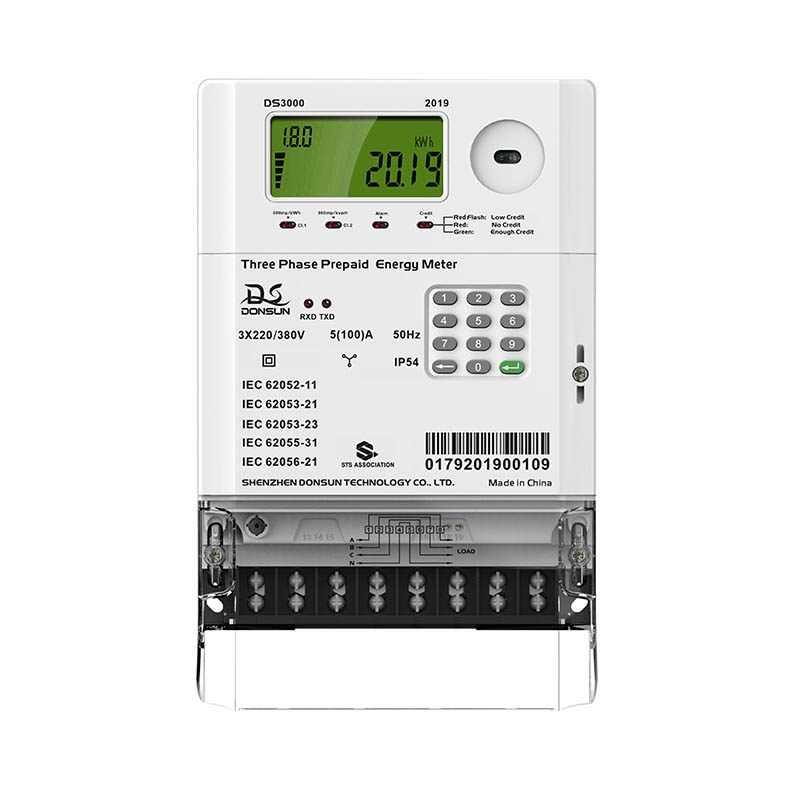Revolutionizing Energy Monitoring: Exploring the Key Features of GPRS Wireless Energy Meters
2023-12-12
Introduction:
In the pursuit of efficient energy management, traditional energy meters have undergone a profound transformation with the advent of GPRS Wireless Energy Meters. These innovative devices leverage General Packet Radio Service (GPRS) technology to introduce a new era of connectivity and real-time data transmission. In this blog, we will unravel the key features of GPRS Wireless Energy Meters and illuminate how they differ from their traditional counterparts.
Key Features of GPRS Wireless Energy Meters:
1. Remote Data Transmission:
Traditional Energy Meters: Traditional meters often require manual readings, involving physical visits to the meter location. This method can be time-consuming and may lead to delays in obtaining accurate consumption data.
GPRS Wireless Energy Meters: GPRS technology allows for seamless remote data transmission. These meters can send real-time energy consumption data to central monitoring systems, eliminating the need for manual readings and enabling timely decision-making.
2. Real-Time Monitoring:
Traditional Energy Meters: Traditional meters provide historical data during periodic readings. Real-time monitoring is typically not a feature, making it challenging to identify and address sudden spikes or unusual patterns in energy usage.
GPRS Wireless Energy Meters: GPRS connectivity enables continuous real-time monitoring of energy consumption. This feature provides an up-to-the-minute overview of usage patterns, allowing for immediate intervention in response to anomalies and the implementation of energy-saving measures.
3. Data Accuracy and Precision:
Traditional Energy Meters: Traditional meters may be susceptible to inaccuracies, especially when relying on manual readings. Factors such as human error and delays in obtaining readings can impact data precision.
GPRS Wireless Energy Meters: GPRS meters enhance data accuracy by automating the data collection process. The elimination of manual readings reduces the likelihood of errors, ensuring more precise and reliable energy consumption data.
4. Flexible Deployment and Scalability:
Traditional Energy Meters: Traditional meters are often constrained by physical connections and may require extensive wiring for deployment in remote or challenging locations. Scaling the system may also pose logistical challenges.
GPRS Wireless Energy Meters: GPRS technology facilitates flexible deployment, allowing meters to operate over cellular networks. This flexibility is especially beneficial in locations where physical connectivity is impractical. Additionally, the scalability of GPRS systems enables the integration of a large number of meters into a centralized monitoring system.
5. Cost-Efficient Data Transmission:
Traditional Energy Meters: Traditional meters may rely on manual processes or wired communication, incurring additional costs for labor and infrastructure.
GPRS Wireless Energy Meters: GPRS operates on a packet-switched network, optimizing data transmission efficiency. This results in cost-effective communication, especially for transmitting smaller amounts of data, which aligns well with the periodic data transmission needs of energy meters.
Conclusion:
GPRS Wireless Energy Meters represent a paradigm shift in the field of energy monitoring, introducing advanced features that transcend the limitations of traditional meters. With the ability to provide real-time data, operate remotely, and offer cost-efficient scalability, these meters are at the forefront of the smart energy revolution. As industries and consumers embrace the imperative of sustainable energy practices, GPRS Wireless Energy Meters emerge as indispensable tools for informed decision-making and efficient resource management.



